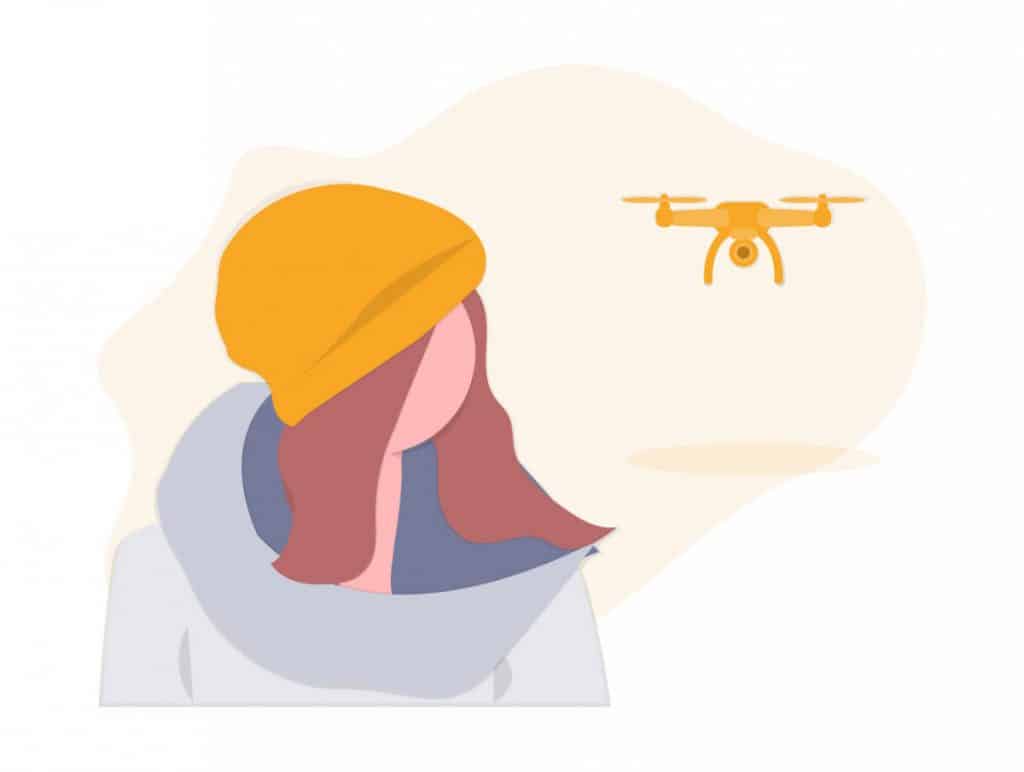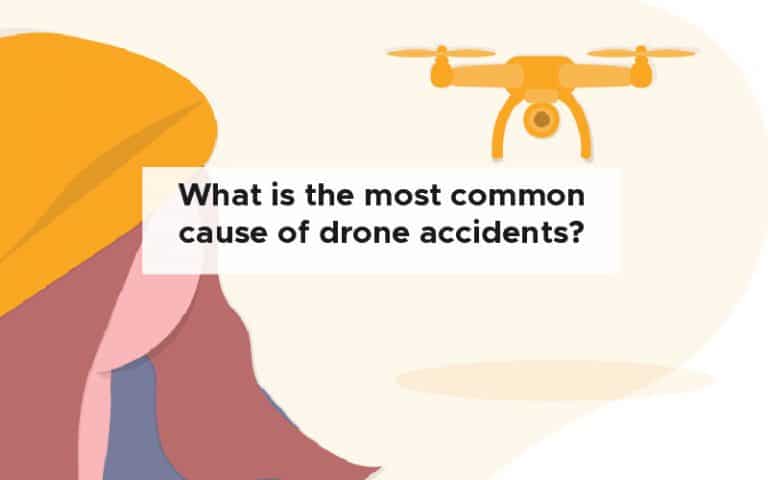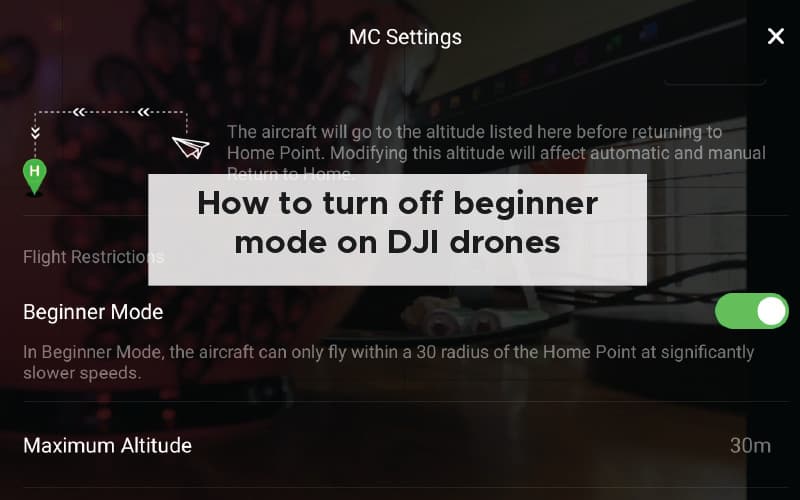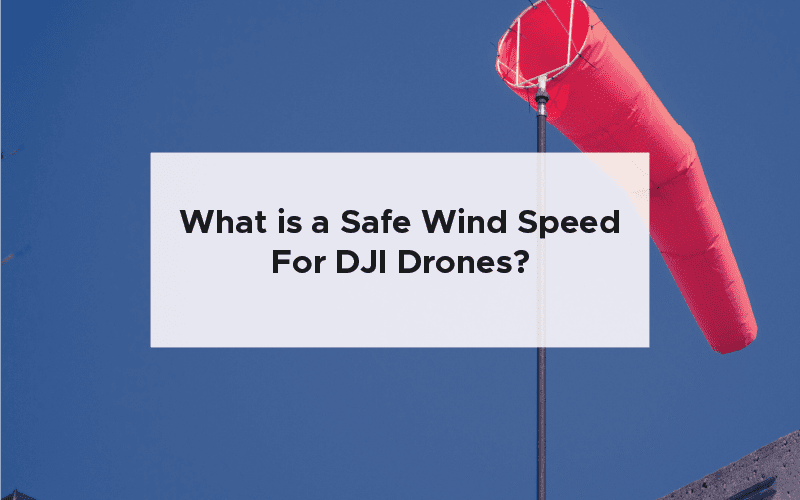When I first bought a drone, I was paranoid about crashing it into the ground. There were plenty of times when I came close to crashing my drone. Drug manufacturers make it incredibly easy to fly within minutes of receiving your drone. Most of the time, the batteries are charged, and excitement gets in the way of common sense.
Pilot error has been a contributing factor to some of the most notorious drone accidents. According to a 2016 study, pilots are likely to experience loss of control in flight, events during takeoff and in cruise, and equipment failures. Inexperienced pilots find it hard to respond to these.
This article will go over some of the most common causes for drone accidents, how to avoid them, and what to do if your drone ends up being a victim of a crash.
Common drone crash causes
There are many reasons for drone crashes but, pilot inexperience is one of the contributing factors. A study published in 2017 also concluded that there is a current lack of airworthiness requirements in drone regulations which contributed to 150 drone-related accidents. The lack of an airworthiness requirement in combination with pilot error will continue to cause issues and drone crashes for many years to come.
Pilot inexperience
Drones have become a popular consumer item. I know that I was amazed when I walked into a shop and purchased a drone capable of incredible speeds and the ability to reach high altitudes.
Drones have been specifically designed to be consumer-friendly. With artificial intelligence and automated flight features, it has never been easier to fly a drone. However, this can sometimes lead to drone purchases becoming overconfident with their abilities and skills stop
These drones can be flown in various locations, near people, and technology exists to unlock Geo locked zones.
Drone manufacturers are being put under pressure by international legislators to lock any potentially dangerous areas such as airports and government facilities.
Most drones can be unlocked, and there are many ways to get around these manufacturer imposed restrictions.
Safely flying a drone relies on the pilot reading and understanding the drone rules and regulations for the airspace they are flying in. There is also a huge component of trust which goes along with purchasing a drone.
Even if the pilot is following all of the rules and regulations, inexperience can also cause various issues, which we will look at below.
Low battery warnings
Flying on a low battery is one of the easiest mistakes to make. The excitement of flying a drone means that it is possible to deplete the battery before managing to return to your takeoff location.
Many drone first-person view video feeds contain battery information prominently displayed. However, it is very overwhelming when you are an inexperienced pilot, and the sheer amount of data shown can easily distract and confuse a new pilot.
Paying attention to your battery and any returns home warnings is a very important part of flying a drone and something too easy to overlook in the early days of learning to fly.
Not many people realise that many drone companies will start to return home automatically, and some will start landing at 30% battery, and others will force you to land at 15%. Read the manuals to understand where the limits are for your specific drone model.
Using advanced flying modes
Advanced flying modes are available on most drones and, in the wrong hands, can cause drone crashes.
DJI Beginner Mode has been specially developed for those who don’t want to wait to fly a drone but have never flown a drone before. Drone makers are well aware that the excitement of buying a drone means that as long as the battery is charged, many will take the drone out of the box and fly within minutes.
Beginner mode limits the chances of a new pilot damaging a drone or others by imposing flight restrictions, available features, and more. The following are all settings that are restricted in DJI Beginner Mode:
- GPS signal lock required
- limits on flight altitude and distance
- reduced controller sensitivity
- no artificial intelligence flight modes
If you want to know more about turning off beginner mode, check out my other article – click here, where I go through all of the steps and why it is important to start in beginner mode.
It is important to expand your ability as a drone pilot slowly. When practising drone flight, you need to get rid of ego, bravado, and grandiose delusions. Otherwise, the drone can easily crash or be damaged in the first few practice sessions.
Always practice within your abilities and gently push the limits of what you can do. If you’re worried about a particular skill, you can always try again on another day. One day I didn’t mean to push the limits.
Ignoring warnings
While you are flying a drone, there are plenty of warnings that pop up. Ignoring these warnings is very easy to do.
You can tap the screen or wait for them to disappear. I have learnt that some warnings can be ignored whilst others need to be attended to immediately. Manufacturers have colour-coded these warnings and have made it very easy to understand which ones are important.
Nonetheless, the excitement of flying can easily get in the way of responding to prompts from the app.
Overhanging obstacles
Drones come with a variety of sensors that keep them safe from colliding with a variety of obstacles. I have found that many consumer drones have blind areas where there are no sensors. Drones lacking 360° sensors are becoming less of a problem as the technology improves. However, my DJI Mavic air has no side sensors. The lack of sensors means that as it is flying to the side, any overhanging obstacles will easily be missed and, if I do not have a line of sight, increase the risk of a drone crash.
Overhanging obstacles such as tree branches or wires have been at the forefront of my mind while flying. If the drone is relatively far away from you, these can be hard to see and pick out even when you have a direct line of sight.
Flying out of the line of sight
Flying out of the line of sight also causes a myriad of problems for drone pilots.
We are all tempted to sneak around a tree, building, cliff, or other obstacles, but in many countries, the drone’s flight laws and regulations must be within sight of the pilot at all times.
If you end up losing direct line of sight to your drone, you are essentially flying blind.
Flying blind means you can rely 100% on the drone sensors and visual positioning systems to navigate your 3D environment safely. Even for the most experienced pilots, this is a very difficult situation.
Some drones have 360 ° sensors, which means they can autonomously fly through even the trickiest of environments. However, most drones only have forward, backward, and downward sensors.
You can also lose control of your drone using flying goggles that broadcast real-time first-person video. Using drone goggles means you cannot quickly check the current drone position using the line of sight and should only be used for racing drones or other niche drone applications.
Unpredictable weather
The weather can change quickly, and drone pilots are often caught unaware by wind gusts or strong wind direction changes. You can find these when you are flying at high altitudes all over the edge of a cliff.
Anything above a force seven wind which is approximately 17 to 20 m/s (38 – 45 mph), is far too high to be flying a drone. As a rule of thumb, for commercially available drones such as the DJI Mavic series and the phantom series, you shouldn’t fly in winds greater than two-thirds of the maximum flight speed of your model of drone.
Flying in winds that are any higher than two-thirds of the maximum flight speed of your drone can cause you to lose control quickly. If you want to know more about safe wind speeds for DJI drones, check out my other article, where I go through everything you need to know about safe wind speeds and drones – click here to be taken to the in-depth article.
You should avoid flying your drone on days where there is a high potential for showers or snow. Getting your drone weight is incredibly damaging to the electronics inside, and it can cause significant amounts of irreparable damage.
Birds
When launching your drone into the wild, you have to accept responsibility for the animals and nature you observe. Just like a well-known hiking moto “Take nothing but photos, leave nothing but footprints”, as drone pilots, we have a responsibility for acting responsibly and ethically when flying our drones
It’s common for birds of prey to attack drones by swooping from above. You can stop your drone from being attacked by a bird by making it bright and look less like prey and avoiding natural bird habitats where they may be nesting or feeding.
Birds attacking drones are surprisingly common and occur all over the world. Interestingly, it is only the largest of birds of prey that commonly take on drones – it may be because of their size, they feel more comfortable tackling such a strange flying object.
If you want to know more about whether or not drones get attacked by birds, you can check out my other article – click here to go through all of the common reasons. Or, you can check out my YouTube video where I talk about bird attacks on drones.
although most birds will be scared away by the presence of a drone, it doesn’t mean that your drone won’t come under attack if you are flying near birds, their nests, breeding grounds, or feeding areas. It would help if you always flew your drone to minimise your impact on the environment.
Flying indoors
Flying indoors increases the risk of losing control of a drone. The flight’s margin of error is minimal. Inside, too, many different obstacles can quickly come into contact with the drone’s propellers.
Flying near walls and ceilings can cause different wind currents and directions, making your drone very unpredictable during flight.
Very often, you can overcome problems flying indoors by using cages on the propellers. Many manufacturers offer propeller cages for their drones. Using these cages is likely to reduce the incident of a crash if you accidentally bump into the wall, door, ceiling, or other overhanging obstacles such as houseplants.
Make sure you choose a small drone to fly indoors, which comes with a 360 ° cage for the propellers. A small drone with full protection gives you the best way to keep the drone safe and prevent you from losing control during your indoor flight missions.
How common is it to crash a drone?
A 2016 study found that over ten years (from 2006 to 2015), there were approximately 150 remotely piloted aircraft system accidents and incidents. It was found that the operations were more likely to experience incidents such as loss of control in flight, events during takeoff and in crews, and significant equipment problems. They found that the technology issues, not human factors, other key contributors in drone incidents. Their study contradicts the typical industry narrative in which they believe that human factors are the key contributor. They conclude that regulators should therefore look at technologies and not just focus on the education of drone operators.
It is estimated that one in every three drone pilots will experience a significant crash. These incidents will likely lead to a drone being completely disabled or damaged and requiring repairs. I suspect that drone incidents are greatly underreported because there is no requirement for hobby drone operators to report every incident or accident with their drones.
What should I do if I crash my drone?

If you crash your drone, you should first of all check for injury to people or property whilst remaining levelheaded and avoiding panic. Observe the drone for damage and then, if it is safe to, pick up the drone and remove any power supply. Look for damage and then, based on the damage, come up with a repair plan.
Here are all of the steps that you should go through if you crash your drone:
- Don’t panic – it is important not to panic. As soon as you crash your drone, take a couple of deep breaths before implementing any actions. A clear head will make sure that your drone survives in the best way possible.
- Check for injury to people – it is important to check for potential injury to people. Remove any hazards from around the drone. Check that the drone has not contacted anyone during its uncontrolled descent.
- Turn off the remote – disconnect the remote from the drone. You do not want to accidentally bump the drone and cause it to spin its propellers while you are recovering it.
- Observe drone for damage – before picking up the drone, observe the drone for damage and note of where the most significant damage has occurred.
- Pick up the drone and remove the power – if it is safe to do so, pick up the drone and remove any power, such as batteries.
- Look for any damage – look in detail for any damage. And collect any parts which have fallen off the drone.
- Come up with a repair plan – coming up with a repair plan will require you to look at your drone insurance (if you have any) and come up with a plan of attack to fix any issues. The most common areas a drone breaks are the arm and propellers.
Summary
In this article, we have looked at the most common causes of drone accidents. The scientific literature is divided on whether or not the pilot error is the most common cause or whether not technological and equipment failure is the common cause.
The most common causes, in my experience, seems to be pilot inexperience and getting too cocky while flying the drone. Remember to slowly expand your capability and turn on beginner mode when you first get a drone. Learning to pilot requires dedication and small steps performed regularly. If you do not fly professionally, paying attention to warnings on your drone and making sure you get a drone with sensors will reduce the chance of you damaging your drone.






